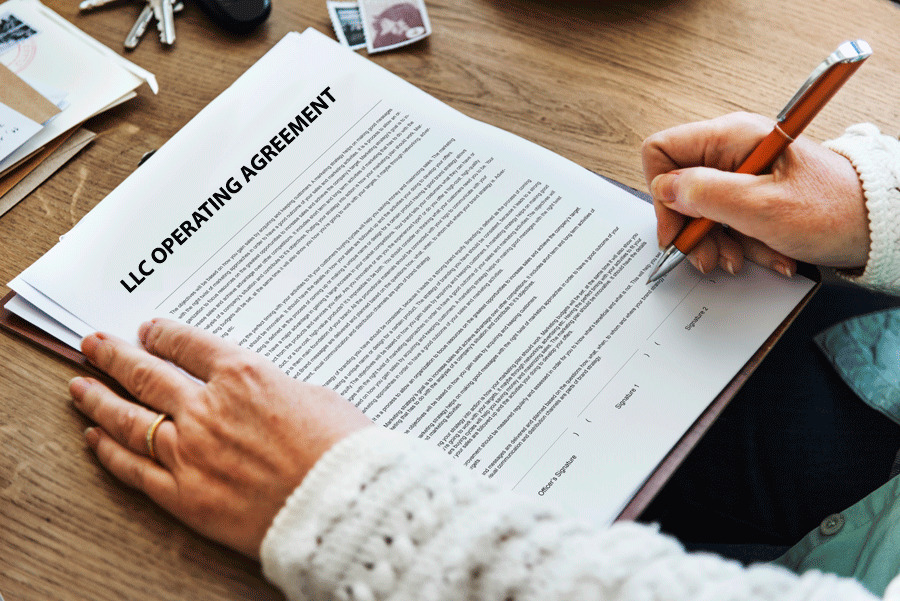A Bill of Lading Form, abbreviated as B/L or BL, is a contract between carrier/shipper and recipient/buyer of shipping physical inventory – ocean freight or air freight under the terms and conditions agreed upon.
It outlines who is responsible for any damages, losses, and delays of goods and proves the existence of a goods transportation contract.
The bill of lading binds the carrier and the buyer to the obligation of a shipment. It also outlines all the necessary details needed for processing a shipment. It thus ensures each party carries out their due diligence as they are liable to potential litigation should they fail to adequately carry out their duties. The duties of each party are distributed accordingly with the document. This document must accompany the shipped products and must be signed by the authorized representatives from all the concerned destinations.
Understanding Bill of Lading
As a title document, a bill of lading form is a valuable document when it comes to shipment. Therefore, ordinarily, three bills are issued for each shipment, one to the exporter, second to the consignee, and third to a third party such as a bank or broker. However, there are no limitations as to the number of bills that can be issued, but the more the bills, the higher the risk of loss of goods to fraud, theft, or unauthorized releases.
A BL will typically function as a title to the goods outlined in it, a receipt to the shipment, and finally, as a document that specifies the agreed terms and conditions for the shipment of the described goods. Once signed by all involved parties and issued, the document is legally binding.
Due to the probability of fraud cases when shipping goods, a bill of lading becomes a key document in its prevention. This is possible through consistent review of BLs within a business since no one party is assigned the same duties in regards to the transportation of the goods outlined in the form.
Free Templates
A bill of lading is meant to outline who, why, what, how, and when associated with a shipment. To address these aspects, there is essential information that must appear in the template.
The template is cost-effective and efficient to use. You just have to fill in the details in the template, and the bill of lading will be ready to dispatch. However, it is essential to learn how to fill the template.
Following are some free downloadable templates for you:

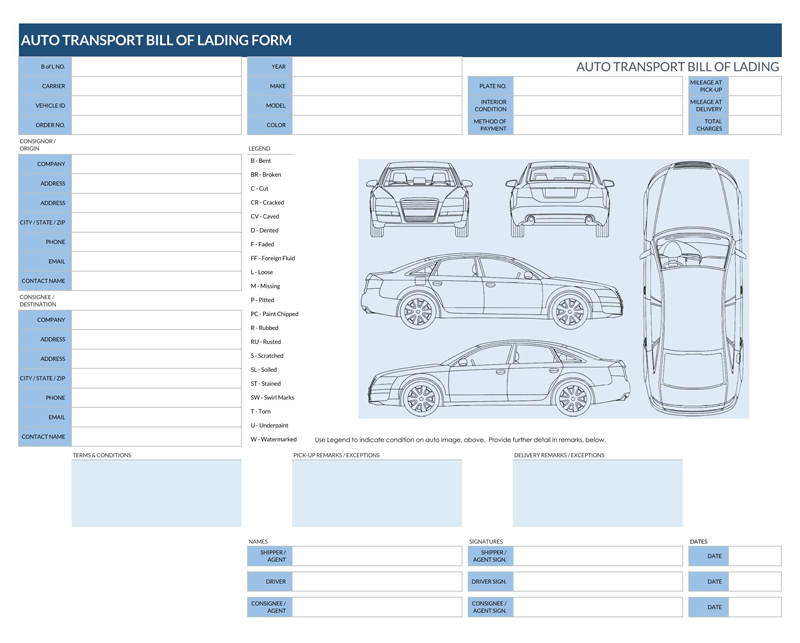
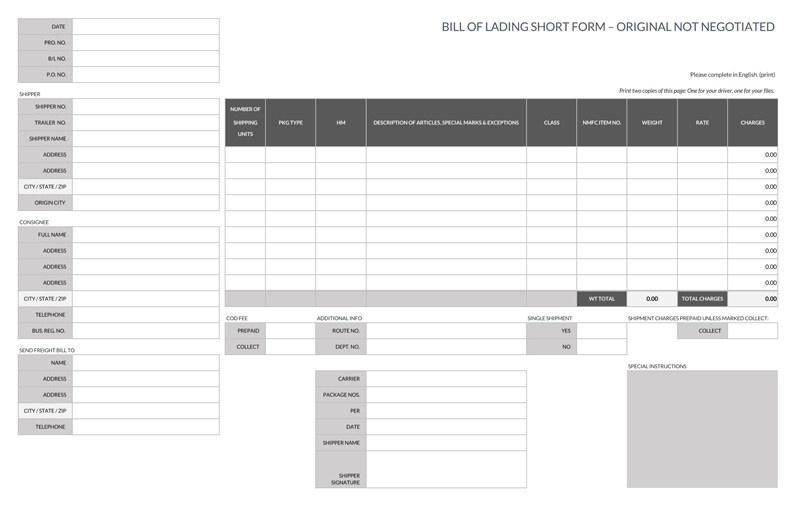



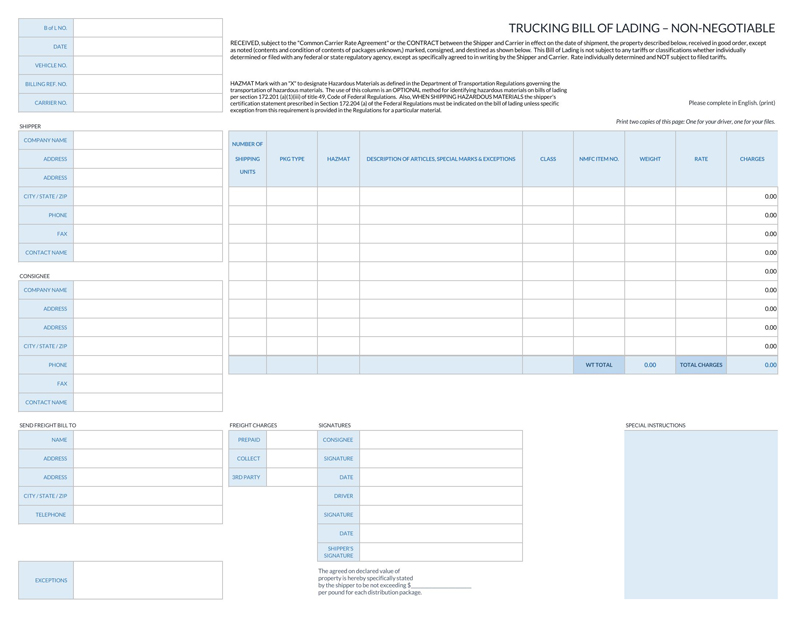

Purpose of a Bill of Lading
On top of being a contract, the bill acts as a receipt and document title. Bills of lading are proof of the contract between the shipper and the buyer. The bill outlines the shipment’s type, quantity, and destination, the exporter and buyer/importer, shipping line, vessel of transportation, and other shipment details that are not covered in a shipment label. As a title to the goods/shipment, it has to be submitted for the goods to be released by the shipping line for the buyer to claim ownership. As a receipt, it is a legal confirmation of delivery.
The bill is meant to protect the shipper and recipient from lawsuits by outlining pertinent details about the shipment, which can be used to identify the at-fault party in case any issues arise during transportation.
Types of Bill of Lading
There are a number of types of bills of lading. This article will look at these different bills of lading in an effort to differentiate their utilization. It is essential to differentiate these types of bills to avoid misunderstandings when shipping goods.
They include:
- Master: A master bill of lading form is used when a third-party intermediary has been used for shipping. The shipping line issues this type of bill to the intermediary (freight forwarder), identified as the consignee, shipper, and notify party in the document.
- House: Like a master bill, a House bill is used when a freight forwarder/intermediary is used. However, the intermediary issued a house bill to the actual shipper once the shipment had been received and the paperwork was in order.
- Original B/L: An original B/L is one of the hard copies of original bills of lading.
- Telex release: A Telex is a digital copy of the original B/L. It can also be presented to secure the release of the shipment. The carrier issues it to the actual shipper once the shipper sends the original B/L after payment, and the consignee or buyer can use it to access the shipment. A Telex release is not a substitute for original B/L; however, it is fast, convenient, and lowers the costs of shipping the original B/L.
- Sea waybill/express bill of lading: An Express release is a digital B/L used under specific circumstances and where physical bills of lading are not used. It is recommended among trusting parties.
- Switch bill of lading: Switch B/L is the second set of original bills of lading and is created to substitute the original B/L from the actual shipper. It represents the same cargo as the original B/L. It is used when the intermediary intends to conceal the actual shipper’s identity from the buyer, wants to consolidate separate purchases under one form, and when the point of discharge has to change due to a resale before the goods get to the buyer.
- Straight bill of lading: A straight B/L is a non-negotiable contract that ensures a shipment is solely released to the designated/named recipient. Therefore, it should be marked as non-negotiable.
- Clean bill of lading: A clean BL is issued when a shipment is received without any faults in the paperwork and condition. In situations where there were any defects identified, a clean BL should NOT be issued.
- Onboard: An onboard BL is issued when a shipment is loaded onto a ship, and the ship’s master signs the bill in circumstances where payment for cargo is on the condition that a letter of credit is issued.
- Airway bill: An Airway bill is a non-negotiable contract used with international airline cargo once the cargo has been received and export customs formalities have been completed. The bill is issued to the carrier, shipper, importer, and a copy for other purposes. An airway bill is not a bill of lading as it does not act as a document of title. However, it acts as an invoice, proof of insurance, and a customs declaration.
How to Fill Bill of Lading Form
The contents of a form will differ from one cargo to the other. However, there are fundamental sections on the document that must ordinarily be completed.
Below is a guide on how these sections are filled:
Shipper/exporter
Indicate the name and address of the exporter at the top. This information should be accurately captured to avoid mix-ups and misunderstandings.
Notify party
Then supply the details of the party designated to be notified of the status of the shipment. In some cases, this can be the same as the consignee or clearing agent appointed by the consignee.
Mode of initial carriage
The document should then clarify the mode of transportation used to bring the cargo to the loading port.
EXAMPLE
A truck or rail.
Place of initial receipt
The location when the carrier first received the cargo should be indicated. Write down the city and the correct zip code.
Vessel name
Then outline the identification details of the vessel that will be transporting the cargo. This will usually be the vessel number and the voyage number. This section is strictly meant for the mother vessel covering the main route, not vessels taking the feeder line.
Port information
The document should specify the following:
- Port of loading: Indicate the port where the shipment will be loaded onto the identified vessel.
- Port of discharge: The document should then state the port where the cargo will be received by the vessel. The point of offloading from the vessel.
Place of delivery by carrier
Then, the form states where the carrier will be delivering the cargo to the named intermediary/consignee.
Booking no.
The unique reference number that can be used to identify the cargo should then be written down. Again, this information is provided by the supplier.
Bill of lading no.
The unique form should then be supplied.
Export references
The export references provided by the shipper ought to be written next. The shipper normally gives export references, and they can be used to reference the cargo internally.
Forwarding agent/fmc no.
Provide information about the associated freight forwarding agent. Identify them by name and license number.
Point and country of origin
The document then states the origin of the cargo. Cargo from different countries will have different customs guidelines imposed on them.
Indicate “for delivery of goods please present documents to”
The carrier’s agent assigned to handle shipment releases should be identified in the BL.
Domestic routing/export instructions
The documents then clarify the actual terminal where the shipment at hand will be loaded onto the mentioned vessel. Different types of goods will be loaded from different terminals, and thus this information is important.
Freight payable at
Afterward, state when and where the applicable fees will be paid. Payments can be paid at origin or destination contingent on whether the cargo is prepaid or post-paid.
Type of movement
Indicate whether the cargo is port-to-port, door-to-door, or CFS-to-CFS.
Marks & numbers/container numbers
State any markings engraved externally on the cargo for identification purposes. For LCL, the markings are engraved on the carton or shrink-wrap used. FCL is identified by the container number as well as the container seal.
No. of packages
Next, quantify the cargo. LCLs are quantified by the number of packages in the largest unit, while FCLs use containers.
Total number of packages
The document should then outline the total quantity of packages which is a summation of the number of packages listed above.
Description of packages and goods
A description of each package in the cargo is then provided. The description should be detailed by describing the package to the smallest unit, the type, and the quantity of each package. Additional notes such as the instruction “handle carefully” should be written in the description.
Gross weight
The document then shows the gross weight of the entire cargo. Weight is a key consideration in shipping. Therefore, the total gross weight should be listed in the appropriate units – kilograms are common but include pounds if the cargo is shipped to or from the US.
Measurement
The size of each package should then be stated. This can be achieved by indicating the dimensions of each package.
Freight charges
A complete breakdown of the applicable charges to the shipment should be provided next. The fees should be accurately provided.
Prepaid
If a shipment has been prepaid for, the exact amount ought to be indicated in the form. This will usually be the ocean freight fees and additional costs at the origin.
Collect
The amount that ought to be paid before the cargo is released should then be stated. For post-paid shipments, this will normally be the ocean freight cost, DTHC, and additional charges at the port of discharge.
By & dated
The form ought to state the issuing party and the effective date. In addition, the carrier’s representative should provide their name, signature, and an official shipping line seal.
Free Forms

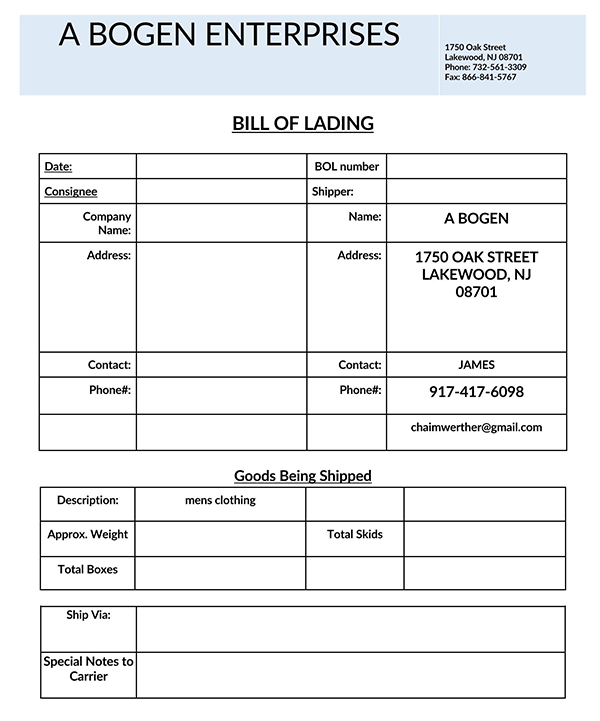
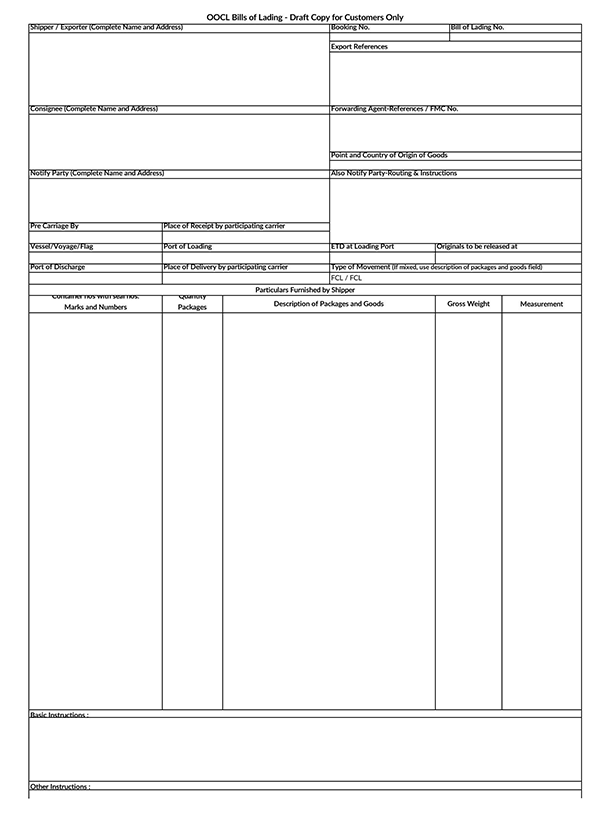

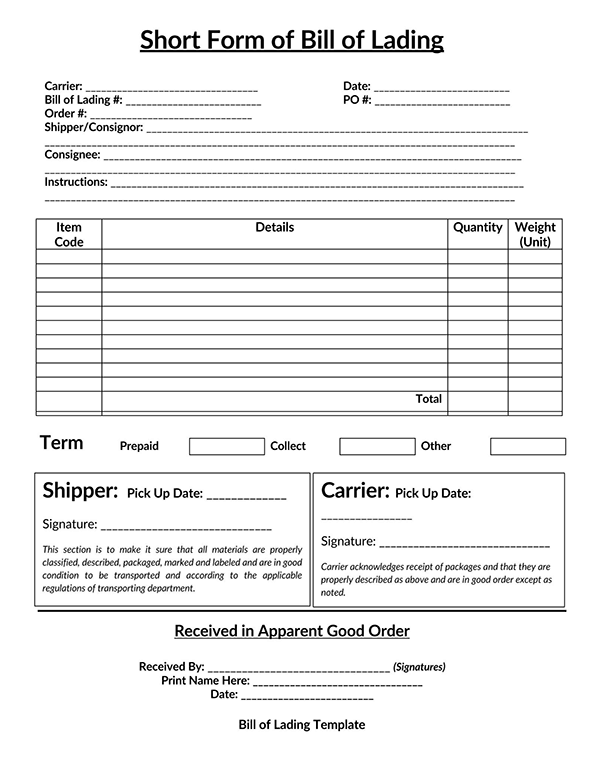

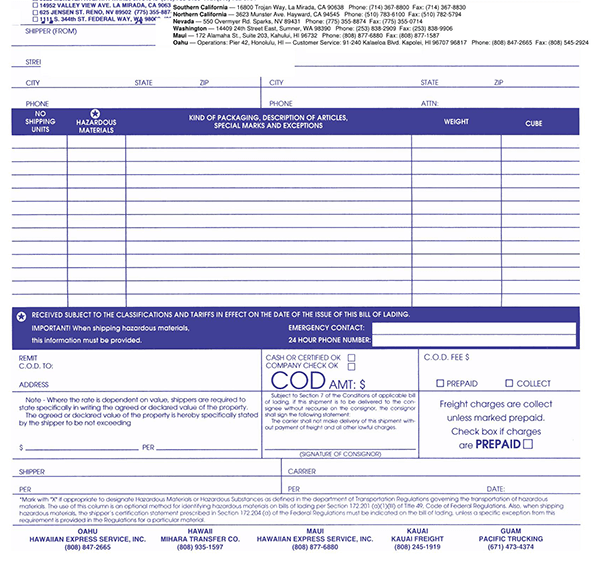
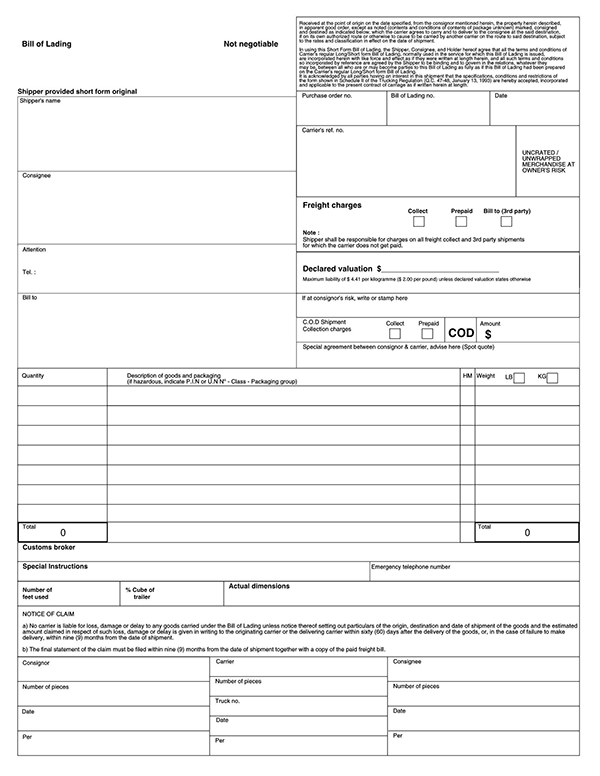
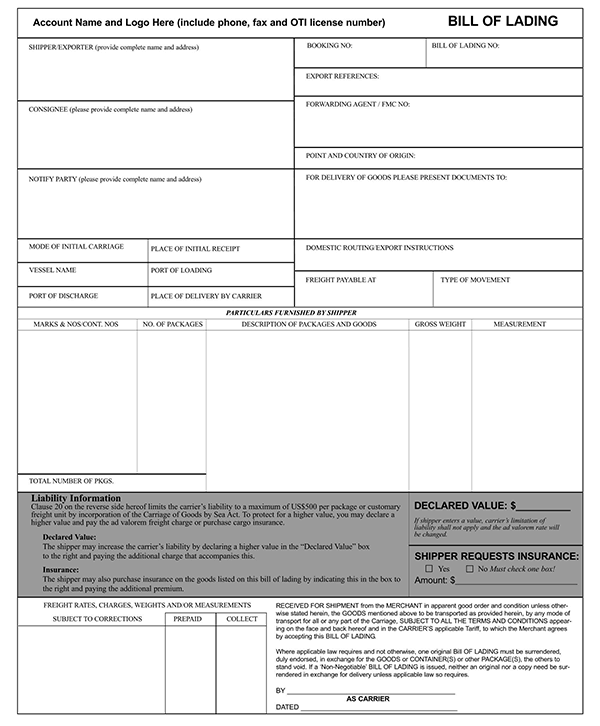
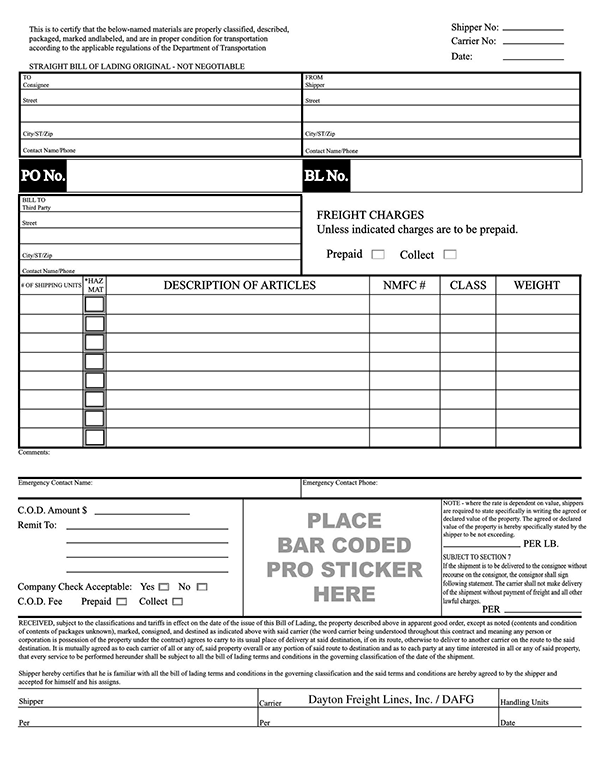

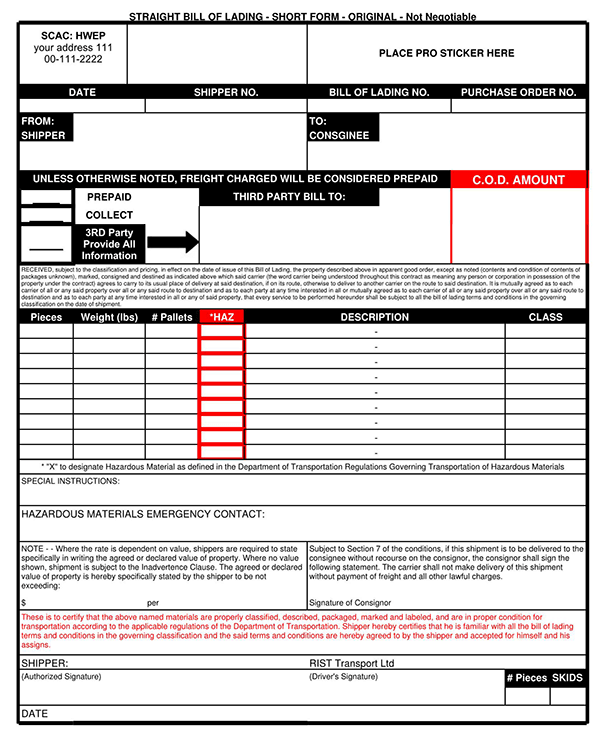
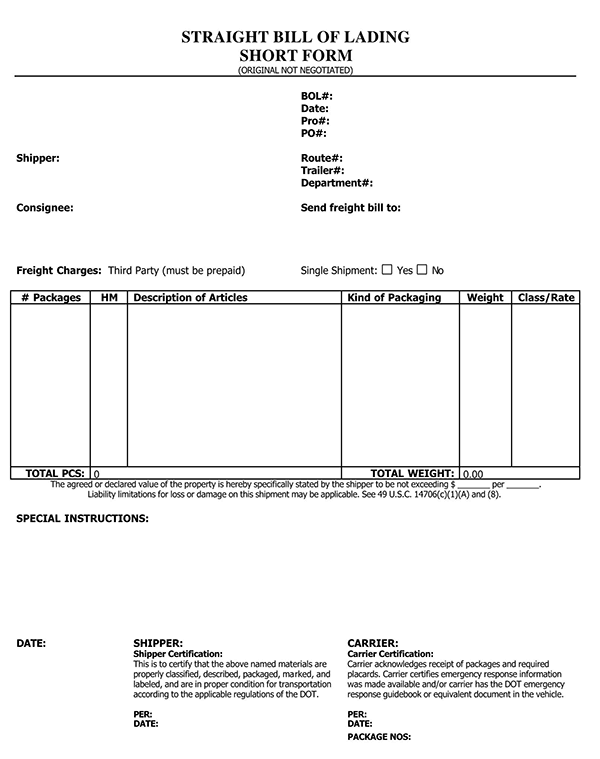
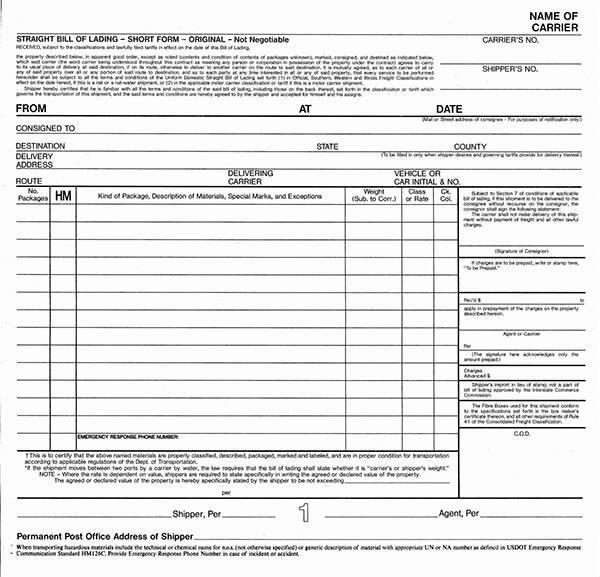
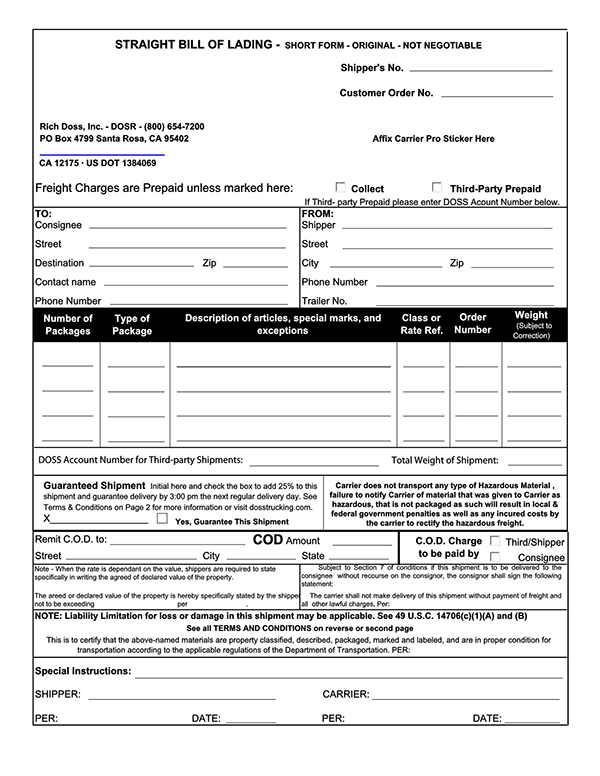



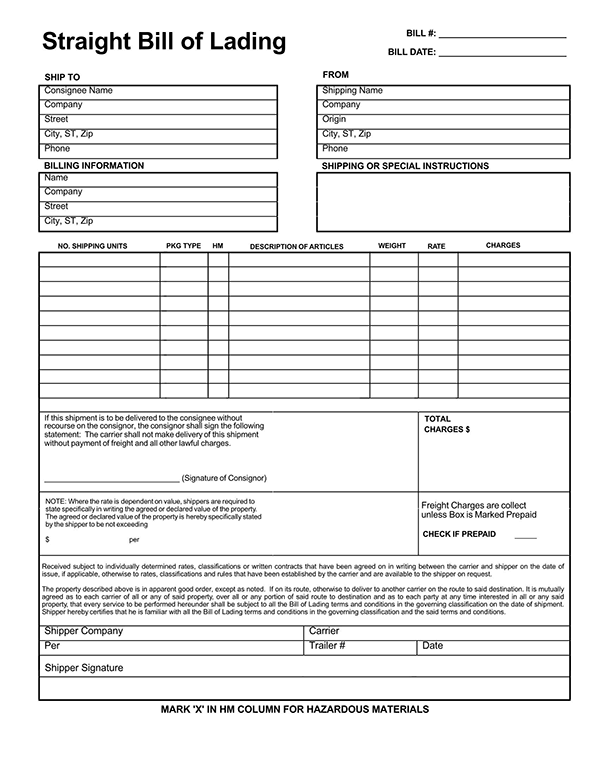

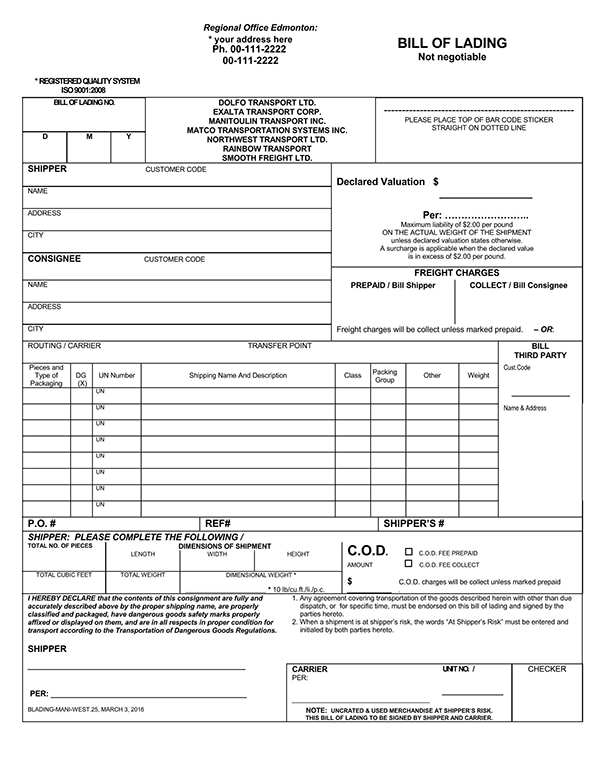


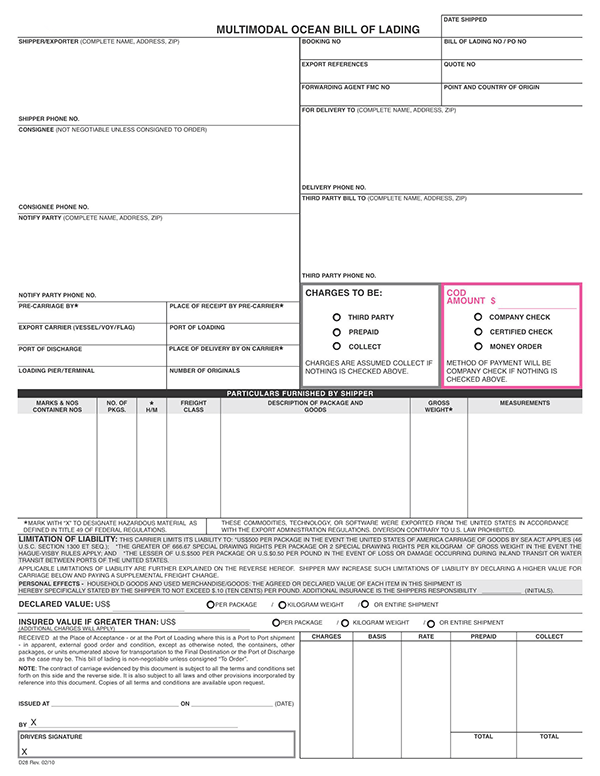
Tips on Completing a Bill of Lading
The objective of writing a BL is to ensure the document is correctly completed. However, mistakes can lead to delays in shipment and payment, situations best avoided.
To ensure this is avoided, the following tips are worth considering when writing a bill of lading:
Fill in all required fields
Ensure that every necessary section is filled with the appropriate information. Planning is an effective way of ensuring no section is missed or is lacking. Go through the form, check what information is needed, and collect it before writing it down.
Pre-writing planning helps avoid mistakes and gives one enough time to gather accurate information. The information should also be written in a legible manner.
Double-check
Always go through the BL before issuing or filing it. Confirm whether each detail has been accurately captured. Verify the names of parties, reference numbers, contact details, descriptions, and every other detail.
Identify hazardous materials
Always verify if the cargo is hazardous. Ensure this information is captured in the bill and ascertain that all applicable licenses and permits have been obtained for the shipment.
Detail as much as you can
In the cargo description, provide as many details as feasible. The more detailed a bill of lading is, the more effective it is.
Never put false information
Avoid providing false information in the document. A BL is a legal document that can be presented in court as evidence; the consequences of presenting wrong or false information in court are severe.
Always send it by courier service
For easier tracking and faster transporting of the BL, always use courier services. This ensures the document gets to the recipient on time, avoiding unnecessary shipment and payment delays. Always consult with the recipient on which documents they would like to be sent with the BL.
Conclusion
Loss of shipment is a problem in the shipping industry that can be attributed to incomplete bills of lading. Therefore, taking time to complete the document can prevent loss of money and time in shipping. A well-crafted bill of landing also ensures the supplier, carrier, and buyer are legally protected should any issues arise.
Each party should then familiarize themselves with the different types of BLs to ensure they use one that best suits their situation. Use available templates when creating a BL. This way, one is assured that all the pertinent sections are captured.




